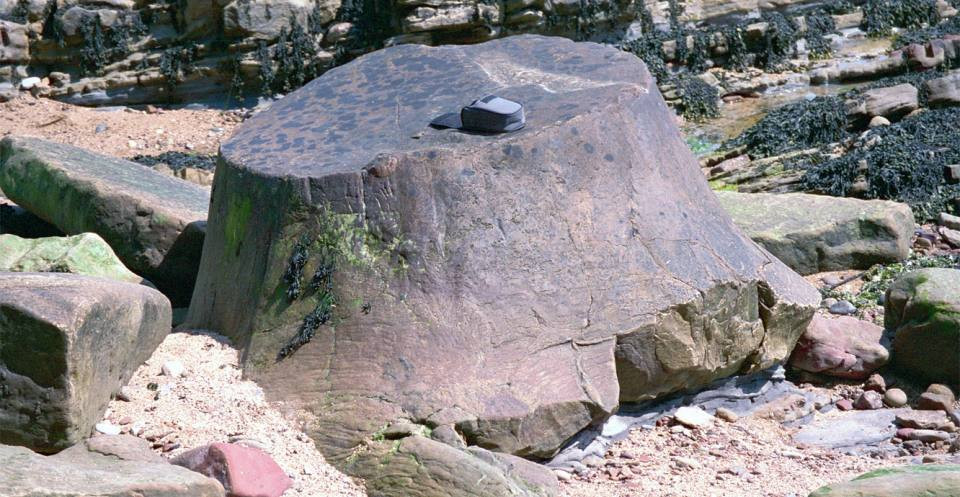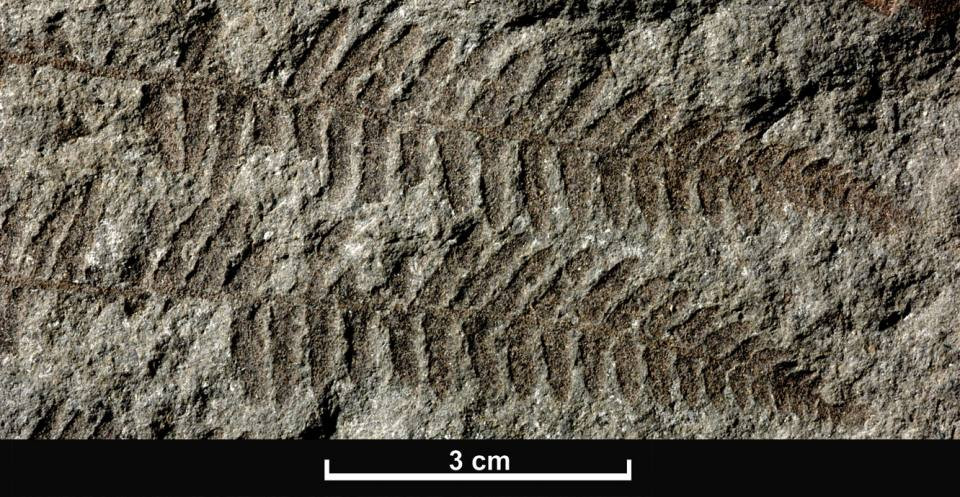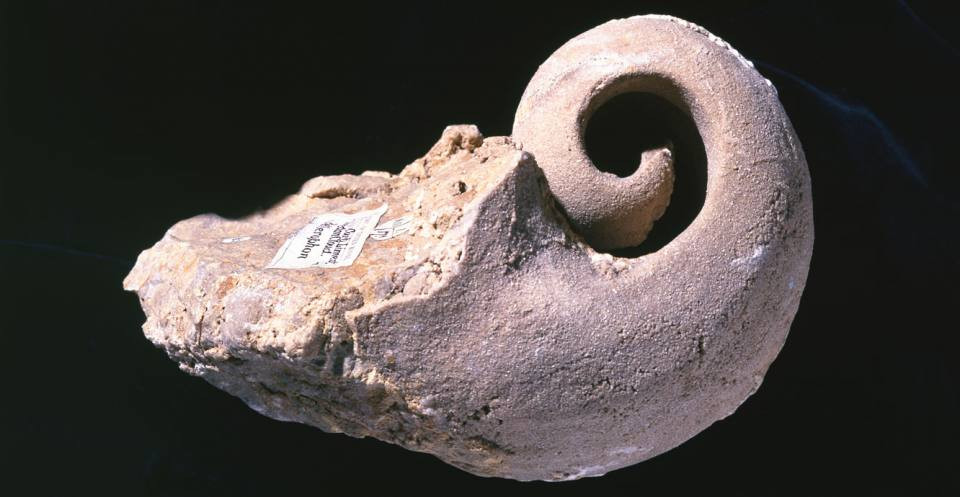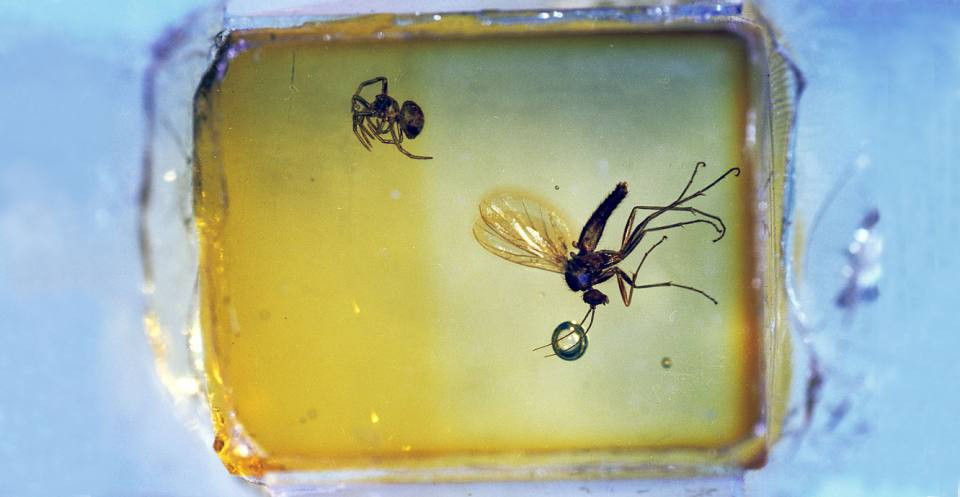Are you curious about how ancient life turns into stone? Rock fossils, those fascinating remnants of prehistoric organisms, offer a window into Earth’s deep past. At rockscapes.net, we’re passionate about connecting you with the wonders of geology. Let’s explore the captivating journey of fossil formation, from burial to discovery, and uncover the secrets these rocky relics hold, featuring permineralization, compression, and fossilized remains.
Table of Contents
- What Exactly is a Rock Fossil?
- Who Studies Fossils and Why?
- What are the Key Steps in Rock Fossil Formation?
- How Does Petrification Play a Role in Fossilization?
- How Does Compression Create Rock Fossils?
- How are Rock Fossils Formed Through Molds and Casts?
- What are Preserved Remains in Rock Fossils?
- What Geological Factors Influence Fossil Formation?
- What Types of Environments are Ideal for Fossil Formation?
- How Do Scientists Date Rock Fossils?
- What Can Rock Fossils Tell Us About Evolution?
- How Do Paleontologists Find Rock Fossils?
- What are Some Famous Rock Fossil Discoveries?
- What Role Do Fossils Play in Landscaping and Design?
- FAQ: Answering Your Questions About Rock Fossil Formation
- Ready to Explore the Beauty of Rocks?
1. What Exactly is a Rock Fossil?
A rock fossil is the preserved remains or traces of ancient organisms – plants, animals, or other life forms – that have been naturally entombed within Earth’s geological layers for over 10,000 years. These remnants, often found in sedimentary rock, provide invaluable insights into prehistoric life, evolution, and environmental changes. In essence, they’re snapshots of bygone eras etched in stone, offering us a tangible connection to the planet’s distant past, showing the evolution and adaptation of species, the transformations of our environment, and the shifting connections between continents.
Let’s break down what makes up a rock fossil:
- Preserved Remains: This typically involves the hard parts of organisms like bones, shells, and teeth because soft tissues usually decay quickly.
- Traces of Life: These aren’t the body parts themselves, but rather evidence of an organism’s activity such as footprints, burrows, or even fossilized dung (coprolites).
- Sedimentary Rock: This is the most common type of rock in which fossils are found, as the layering process allows for burial and preservation.
- Ancient: To be considered a fossil, the remains or traces must generally be at least 10,000 years old, dating back to the last Ice Age or earlier.
The word “fossil” itself comes from the Latin term “fossilis,” meaning “unearthed”. This etymology reminds us that these treasures are hidden within the earth, waiting to be discovered.
Rock fossils are divided into two primary types:
- Body Fossils: These are the direct, preserved remains of an organism’s body parts, such as a dinosaur bone or a seashell.
- Trace Fossils: These are indirect evidence of life, recording an organism’s behavior and activity, such as a footprint or burrow.
2. Who Studies Fossils and Why?
Paleontologists are the scientists who dedicate their careers to studying fossils. They are detectives of the deep past, piecing together the history of life on Earth through the clues that fossils provide. They study fossils to understand:
- The History of Life: Fossils show us the progression of life forms over millions of years.
- Evolution: Fossil records provide evidence of how species have changed and adapted.
- Ancient Environments: Fossils help us understand what the Earth was like in the past, including climate, geography, and ecosystems.
- Dating Rocks: Certain fossils are associated with specific time periods, helping geologists determine the age of rock layers.
According to research from Arizona State University’s School of Earth and Space Exploration, paleontological studies contribute significantly to our understanding of the planet’s dynamic history and the interconnectedness of life.
Fossils help determine the age of rocks by using guide fossils for stratigraphy like ammonites. They determine the relative age of two or more layers of rock, or strata, that are in different places within the same country or somewhere else in the world.
By studying fossils, paleontologists can recreate ancient worlds, envisioning landscapes populated by dinosaurs or insects with enormous wingspans.
3. What are the Key Steps in Rock Fossil Formation?
The formation of rock fossils is a rare and complex process that requires a specific set of circumstances. Here are the key steps involved:
- Death: The process begins with the death of an organism.
- Rapid Burial: To prevent decomposition or destruction by scavengers, the organism must be buried quickly under layers of sediment such as mud, sand, or volcanic ash. Rapid burial is more likely to occur in marine environments.
- Protection from Decomposition: The sediment protects the remains from oxygen and scavengers, slowing down or preventing decomposition.
- Mineralization: Over time, mineral-rich water seeps through the sediment. Minerals like calcium carbonate, silica, or iron replace the organic material of the remains.
- Lithification: The sediment surrounding the remains hardens into rock through a process called lithification. Pressure from overlying layers and the cementing action of minerals transform the sediment into solid rock.
- Uplift and Exposure: Geological processes such as tectonic uplift and erosion expose the fossil-containing rock layers at the Earth’s surface.
- Discovery: Finally, the fossil is discovered, often by paleontologists or amateur fossil hunters.
Fossils are typically found in sedimentary rocks and occasionally some fine-grained, low-grade metamorphic rocks. Sometimes the fossils have been removed, leaving molds in the surrounding rock, or the molds may have later been filled by other materials, forming casts of the original fossils.
4. How Does Petrification Play a Role in Fossilization?
Petrification, specifically through permineralization, is the most common method of fossilization. The term “petrification” comes from the Greek word “petra,” meaning “stone.” This process turns organic material into stone.
Here’s how it works:
- Permineralization: After burial, the remains are exposed to mineral-rich fluids. These fluids seep into the porous spaces within the bone, shell, or wood.
- Mineral Deposition: The minerals in the fluid, such as calcium carbonate or silica, precipitate out and fill the spaces.
- Replacement: Over time, the original organic material is gradually replaced by these minerals. This creates a rock-like replica of the original organism.
 Petrified Tree Stump
Petrified Tree Stump
A great example of petrification is petrified wood, where entire trees have been turned to stone, preserving their original structure in incredible detail.
This tree stump, found in East Fife, Scotland, is a good example of a petrified tree fossil produced by permineralisation. BGS © UKRI.
5. How Does Compression Create Rock Fossils?
Compression is another important method of fossil formation, particularly for plant fossils.
Here’s the process:
- Burial and Pressure: Plant remains, such as leaves and ferns, are buried under layers of sediment.
- Compression: The weight of the overlying sediment exerts immense pressure, compressing the plant material.
- Imprint: This pressure flattens the plant, leaving a dark, two-dimensional imprint on the rock. The organic material may partially or completely decompose, but the shape and texture of the plant are preserved.
 Compressed Fern Fossil
Compressed Fern Fossil
Plant leaves and ferns are good examples of fossils produced by compression. This image shows Coniopteris, which is a type of true fern, or pteropsid, fossil from the Jurassic Period. More about fossil plants. BGS © UKRI.
6. How are Rock Fossils Formed Through Molds and Casts?
Molds and casts are types of fossils that preserve the shape of an organism, even when the original material has disappeared.
Here’s how they form:
- Mold Formation: An organism, such as a shell, is buried in sediment. Over time, the shell dissolves away, leaving a hollow space in the rock. This hollow space is called a mold.
- Cast Formation: If the mold is later filled with sediment or minerals that harden, it creates a cast. The cast is a three-dimensional replica of the original shell.
 Gastropod Fossil Mold
Gastropod Fossil Mold
This image is a mould of an ancient snail or slug called Bellerophon, a gastropod. Fossils can form when mould of the interior of the shell is made by water-borne minerals percolating through it, but later the shell material dissolves away. BGS © UKRI.
7. What are Preserved Remains in Rock Fossils?
Preserved remains represent the rarest form of fossilization, where the actual body parts of an organism are preserved.
Examples include:
- Insects in Amber: Insects trapped in tree resin, which then hardens into amber, can be perfectly preserved, including their soft tissues.
- Frozen Mammoths: In extremely cold environments like Siberia, mammoths have been found frozen in ice, with their skin, hair, and even internal organs intact.
- Tar Pits: Animals trapped in sticky tar pits, like the La Brea Tar Pits in Los Angeles, can be preserved as their bones are protected from decay.
 Fly and Spider in Amber
Fly and Spider in Amber
A fly and spider trapped in amber. Many different animals have been fossilised in amber, from flies and mosquitoes to spiders and snails, and, in very rare instances, ostracods. BGS © UKRI.
8. What Geological Factors Influence Fossil Formation?
Several geological factors play a critical role in whether or not a fossil will form:
| Geological Factor | Influence on Fossil Formation |
|---|---|
| Sediment Type | Fine-grained sediments like mud and silt provide better preservation than coarse-grained sediments like sand and gravel. |
| Burial Rate | Rapid burial protects remains from scavengers and decomposition. |
| Groundwater Chemistry | Mineral-rich groundwater facilitates permineralization, while acidic groundwater can dissolve remains. |
| Tectonic Activity | Can expose fossil-bearing rocks or destroy them through metamorphism. |
| Erosion | Can expose fossils at the surface, making them discoverable. |
9. What Types of Environments are Ideal for Fossil Formation?
Certain environments are more conducive to fossil formation than others:
- Marine Environments: Oceans and seas provide abundant sediment for burial and a high concentration of minerals for permineralization.
- Lakes and Rivers: These freshwater environments can also provide rapid burial and mineral-rich water.
- Swamps and Bogs: Acidic, oxygen-poor environments in swamps and bogs can slow down decomposition, preserving soft tissues.
- Volcanic Areas: Volcanic ash can bury organisms quickly, creating ideal conditions for fossilization.
Fossils are more likely to be preserved in marine environments where rapid burial by sediments is possible. Less favorable environments include rocky mountaintops where carcasses decay quickly or few sediments are being deposited to bury them.
10. How Do Scientists Date Rock Fossils?
Dating fossils is crucial for understanding the history of life and the timeline of evolution. Scientists use two primary methods for dating fossils:
- Relative Dating: This method determines the age of a fossil relative to other fossils or rock layers. It relies on the principle of superposition, which states that in undisturbed rock sequences, the oldest layers are at the bottom and the youngest layers are at the top.
- Absolute Dating: This method provides a numerical age for a fossil or rock layer. Radiometric dating, which measures the decay of radioactive isotopes, is the most common absolute dating technique.
According to geochronology experts at the University of California, Berkeley, radiometric dating provides highly accurate ages for rocks and fossils, allowing scientists to construct a precise timeline of Earth’s history.
11. What Can Rock Fossils Tell Us About Evolution?
Rock fossils provide critical evidence for the theory of evolution. They show:
- Transitional Forms: Fossils of organisms that exhibit characteristics of both ancestral and descendant groups demonstrate evolutionary transitions. For example, Archaeopteryx, a fossil with features of both reptiles and birds, provides evidence for the evolution of birds from dinosaurs.
- Changes Over Time: Fossil records show how species have changed gradually over millions of years, adapting to changing environments.
- Extinction: Fossils reveal that many species that once existed are now extinct, highlighting the dynamic nature of life on Earth.
Fossil evidence provides a record of how creatures evolved and how this process can be represented by a ‘tree of life’, showing that all species are related to each other.
12. How Do Paleontologists Find Rock Fossils?
Finding fossils is a challenging but rewarding endeavor. Paleontologists use a variety of techniques to locate fossils:
- Geological Maps: Paleontologists use geological maps to identify areas with sedimentary rock formations of the right age.
- Surface Surveys: They carefully examine the ground surface for exposed fossils or fragments.
- Excavation: Once a fossil is found, paleontologists carefully excavate the surrounding rock, using tools like shovels, picks, and brushes.
- Screen Washing: Sediment is sometimes washed through screens to find small fossils.
13. What are Some Famous Rock Fossil Discoveries?
Numerous significant rock fossil discoveries have shaped our understanding of life’s history:
| Fossil Discovery | Significance |
|---|---|
| Archaeopteryx | Provided evidence for the evolution of birds from dinosaurs. |
| Lucy (Australopithecus afarensis) | One of the most complete hominin fossils ever found, providing insights into human evolution. |
| Burgess Shale Fossils | A collection of well-preserved fossils from the Cambrian period, showcasing the diversity of early life. |
| Dinosaur Fossils in the Morrison Formation | A rich source of dinosaur fossils in the western United States, including Stegosaurus and Allosaurus. |
14. What Role Do Fossils Play in Landscaping and Design?
While fossils are primarily of scientific interest, they can also play a unique role in landscaping and design:
- Decorative Elements: Fossil-bearing rocks can be used as decorative elements in gardens and outdoor spaces, adding a touch of natural history.
- Focal Points: Large, striking fossils can serve as focal points in a landscape design.
- Educational Displays: Fossils can be incorporated into educational displays in parks and nature centers.
At rockscapes.net, we appreciate the beauty and history that rocks and fossils bring to outdoor spaces. We offer a variety of decorative rocks that can enhance your landscape design.
15. FAQ: Answering Your Questions About Rock Fossil Formation
-
How long does it take for a fossil to form?
The fossilization process can take thousands to millions of years, depending on the specific conditions. -
What types of rocks are fossils found in?
Fossils are most commonly found in sedimentary rocks like sandstone, shale, and limestone. -
Can soft tissues be preserved as fossils?
Yes, but it is rare. Soft tissues can be preserved in exceptional cases, such as insects in amber or frozen mammoths. -
Where are the best places to find fossils?
Good places to find fossils include riverbeds, coastal cliffs, and areas with exposed sedimentary rock formations. -
What should I do if I find a fossil?
If you find a fossil, it is important to document its location and contact a local museum or paleontologist for guidance. -
Are all fossils of extinct organisms?
No, some fossils are of organisms that still exist today. These are called “living fossils.” -
How do fossils help us understand climate change?
Fossils provide evidence of past climates and environmental changes, helping us understand the long-term effects of climate change. -
What is a trace fossil?
A trace fossil is evidence of an organism’s activity, such as a footprint, burrow, or coprolite (fossilized dung). -
Can fossils be found in metamorphic rocks?
Fossils are rarely found in metamorphic rocks because the process of metamorphism often destroys them. -
How do paleontologists know what dinosaurs looked like?
Paleontologists use fossil bones, teeth, and skin impressions to reconstruct the appearance of dinosaurs.
16. Ready to Explore the Beauty of Rocks?
Now that you know how rock fossils are formed, why not explore the beauty and history that rocks can bring to your own landscape? Visit rockscapes.net for inspiration, information, and expert advice on incorporating rocks into your outdoor spaces. Our team at 1151 S Forest Ave, Tempe, AZ 85281, United States, is ready to help you. Call us at +1 (480) 965-9011 and let’s start creating something beautiful together.
At rockscapes.net, you can discover design ideas, learn about different rock types, and get tips for building your own rock features. Let us help you bring the timeless appeal of stone to your backyard.